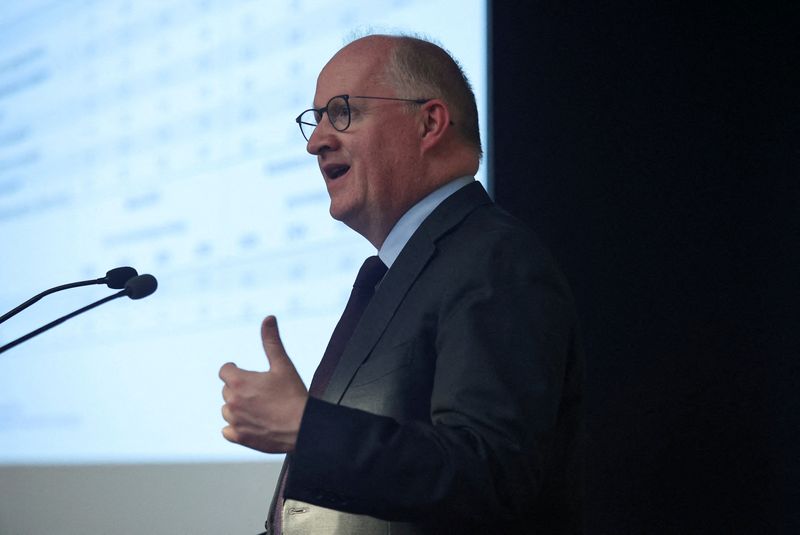FRANKFURT (Reuters) -The European Central Bank's balance sheet needs to be much smaller but cannot shrink back to levels seen in its early years, ECB chief economist Philip Lane said on Thursday, firing the starting gun in a key policy debate.
Lane's comments imply the ECB, which is now mopping up cashfrom the banking system as part of its fight against inflation, is likely to go back to pumping it in at some point in coming years to ensure lending to the economy doesn't dry up.
The ECB promised to devise by the spring a new framework for steering short term interest rates after a decade of massive money printing, which flooded the banking system with some 3.6 trillion euros ($3.85 trillion) worth of excess cash via bond purchases and loans.
The key questions now are just how big the ECB's balance sheet should be under the new framework and what kind of assets should be on it.
"The appropriate level of central bank reserves can be expected to remain much higher and be more volatile in this new steady state compared to the relatively-low levels that prevailed before the global financial crisis," Lane told a conference.
"Even if much lower than the current level, the appropriate level of central bank reserves in the 'new normal' steady state should avoid the risks associated with excessively-scarce or excessively-abundant reserves," he added.
Total assets owned by the ECB have already fallen by nearly two trillion euros from their peak but at seven trillion euros, they are still well above the one to two trillion euro range seen in the early years of the central bank.
Lane said the ECB needed to stick to a 'middle path to underpin the willingness of commercial banks to extend credit in spite of the risks associated with illiquid assets in a world much more prone to macro-financial shocks.
He added such reserves should be provided through "structural" bond purchases and longer-term loans to banks on top of standard short-term refinancing operations.

In addition, Lane said the ECB should remain open to sustained surges in its balance sheet in case interest rates fall back to their effective lowest level, a problem that dominated the decade before the pandemic.
($1 = 0.9361 euros)